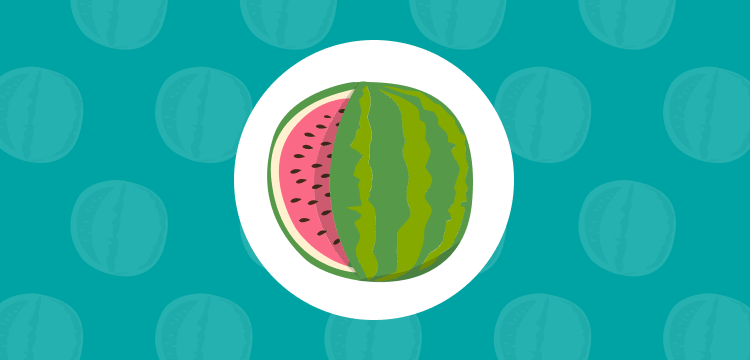39 Weeks Pregnant
You've reached the 39-week milestone in your pregnancy, and you're on the brink of welcoming your precious baby into the world. This stage marks the final leg of your incredible journey toward parenthood. We'll guide you through the wonders of being 39 weeks pregnant and provide helpful tips and information to support you—from the symptoms you may be experiencing to the signs of labor approaching.
Highlights at 39 Weeks Pregnant
You're counting the days now at 39 weeks pregnant. Here are a few highlights:
Your pregnancy is now considered full-term! It’s nearly time to say hello to your new arrival.
At 39 weeks pregnant, your baby is about the size of a mini watermelon.
Watch out for signs that labor is near or has begun, such as losing your mucus plug or your water breaking.
It's a good idea to think about labor positions. Our visual below illustrates some you may like to consider.
Take time to relax in these final days or weeks of pregnancy. You’ve done an amazing job!
Sometimes that perfect baby name doesn’t pop into your head until you meet your newborn, but if you want some inspiration beforehand, try our Baby Name Generator:
RELATED PREGNANCY TOOL
Baby Name Generator
By gender:
By theme:
39 Weeks Pregnant: Your Baby’s Development
You’ve made it this far, and now that you’re 39 weeks pregnant, your pregnancy is considered full-term. The end of the third trimester, and your pregnancy, is now in sight.
Your baby’s lungs and brain are still developing and will continue to develop after they’re born. The brain will reach its full size around age 2, and the lungs will mature around age 3.
Right now, the lungs are busy manufacturing surfactant to keep the air sacs from sticking together when they take their first breath.
Your little one doesn’t have much room to move around in your uterus now, so if you’ve noticed any changes in their movements, that’s probably why. However, you’ll likely still feel some little kicks and jabs. If you’re feeling less movement than usual, you can always check with your healthcare provider for reassurance.
How Many Months Is 39 Weeks Pregnant?
What is 39 weeks in months? At 39 weeks, you’re generally considered nine months pregnant.
Baby's Size at 39 Weeks Pregnant
At 39 weeks, your baby is about the size of a mini watermelon, but remember that healthy, happy babies come in many sizes. Space is at a premium inside your belly this week!
Your Baby: What Does 39 Weeks Pregnant Look Like?
This illustration can give you a general idea of how your baby may be positioned at 39 weeks pregnant:
Your Body at 39 Weeks Pregnant
At this point, you may be more than ready for your baby to be born! Some may find it hard to walk, and moving around a lot or even a little might be a struggle at 39 weeks pregnant.
Try to move slowly and carefully and get as much rest as you can. Sleep might not come easily, so try to save your energy by getting some downtime or a short catnap during the day, if possible.
39 Weeks Pregnant: Your Symptoms
At 39 weeks pregnant, you may be experiencing some of these symptoms:
Trouble sleeping. It may be more difficult to get a good night’s sleep toward the end of your pregnancy. The size of your belly may make it hard to find a comfortable position, and nerves and anxiety can keep you up, too. Try to make your bed and bedroom as comfortable as possible, with plenty of extra pillows to prop you up and keep you comfortable.
Losing the mucus plug. At 39 weeks pregnant, losing the mucus plug that seals your cervix can be one of the normal signs and symptoms of labor approaching, and it can happen anywhere from a few hours to a few weeks before labor actually starts. At 39 weeks or somewhere between 37 and 40 weeks pregnant, you may notice a clear, pinkish, or slightly bloody vaginal discharge or light spotting. This might be the mucus plug.
This plug seals the cervix during pregnancy and keeps bacteria out of the uterus. When it detaches, you might see it in one blob or in several parts on your panties or on the toilet paper after you wipe. If you see anything more than this slightly bloody discharge, such as heavy vaginal bleeding at 39 weeks or any time in your pregnancy, contact your healthcare provider right away.
Water breaking. We’ve all seen it in the movies—when the character’s water breaks, you know the baby is coming soon! This discharge can feel like a trickle or gush of fluid, and it means that the amniotic sac around your baby has broken, the amniotic fluid is leaking, and your labor is starting.
If your water breaks, it’s time to call your healthcare provider, who will let you know what to do next. Some symptoms not to ignore at 39 weeks (or whatever week your water breaks) include a foul odor from your leaking amniotic fluid or having a fever.
If you notice these things, be sure to let your healthcare provider know because this could be an indication of an infection known as chorioamnionitis.
Preeclampsia. Some are diagnosed with this high blood pressure disorder around 39 weeks pregnant or in the last weeks of pregnancy. Some possible symptoms of preeclampsia at 39 weeks pregnant include swelling of your face and hands, headaches, nausea and vomiting, sudden weight gain, shortness of breath, and vision changes.
Your healthcare provider has likely been checking your blood pressure regularly and may continue to do so as needed in these final few weeks, but if you notice any of the symptoms described above, contact them right away.
How Big Is a Pregnant Belly at 39 Weeks?
Your uterus has expanded over the course of your pregnancy. It started out weighing about two ounces before you were pregnant, and it’s now grown to weigh about two and a half pounds.
After you give birth, your uterus will gradually shrink back to its pre-pregnancy size and settle back down below your pubic bone. After about six weeks, it should be back to its normal size.
It’s also common to be concerned about your baby’s movements during this period. Many parents wonder if decreased fetal movement at 39 weeks is a sign of labor or if a baby moving a lot, or a feeling of pressure, could also be a sign of labor. Every baby is unique, and only you truly know your little one’s movements; however, it may be common to feel fewer kicks at 39 weeks pregnant and more rolls. If you’re concerned about your baby’s movements, contact your healthcare provider for more advice.
What Does 39 Weeks Pregnant Look Like?
If you want a general idea of how your belly might look around 39 weeks pregnant, take a peek at the image below.
39 Weeks Pregnant: Things to Consider
As you reach your due date, you might like to consider some of the following things:
When you think you might be in labor, you’ll want to start timing your contractions to make sure you’re not experiencing Braxton Hicks contractions at 39 weeks. If you’re 39 weeks pregnant and you feel your stomach tightening but with no pain, and the contractions come and go, this may be Braxton Hicks.
In the early stages of labor, your contractions might come in 5- to 15-minute intervals, and each contraction might last between 60 and 90 seconds. When your contractions occur at regular intervals and don’t stop when you change positions, it’s probably time to give your provider a call.
As labor progresses, you’ll likely find your contractions occur more frequently, and they might become more intense, too. To help you keep track, download and print our contraction tracking chart.
Speaking of labor, if you experience your water breaking or cramps and period-like pain in your lower back (even with no contractions) around 39 weeks pregnant, contact your healthcare provider. These are also signs of labor, and it’s only a matter of time before your contractions begin. • Be aware that, in some cases, your healthcare provider may recommend inducing labor. This could be because you or your baby has certain medical conditions, your labor is not progressing as it should, or you’ve gone past your due date. Your provider will be able to talk you through the procedure, its risks, and its benefits for your specific situation if this is something that you may need, even if it’s not exactly what you had planned.
Once you’re in labor, you may find some positions more comfortable than others. For example, some people give birth in a hospital bed while reclining with their feet in stirrups, and others may use a birthing chair or stool, depending on the policies and available facilities at the local hospital or birth center.
You may be able to try using a birthing ball that lets you rock back and forth when contractions strike. You might also like to try squatting, standing, or kneeling during labor if your medical team gives you the OK to do so.
It’s a good idea to have a birth plan that outlines how you want to go through labor and some possible comfort techniques. However, keep in mind that your preferences may change when you’re actually in labor and that you'll need to be flexible when the time comes. Check out the visual below for some examples of labor positions you might like to try:
You still have time to do some shopping (even if it’s online) and source any of those missing items you need for your newborn. Check out our newborn essentials list to make sure you have everything you need.
What’s in store after you give birth? It might help you feel more reassured and comfortable with what’s to come if you read up on the kinds of things to expect after giving birth. Here are some of the essential things to know:
39 Weeks Pregnant: Questions for Your Healthcare Provider
Here are some questions you might like to ask your healthcare provider at 39 weeks pregnant:
What are some symptoms not to ignore at 39 weeks pregnant?
How much should my baby be moving in these last few weeks of pregnancy? How do I know if my baby is not moving much at 39 weeks pregnant?
If my baby is in a breech position at 39 weeks, can they be turned head-down?
In what circumstances would labor need to be induced at 39 weeks?
What is an assisted vaginal delivery? Is this something that may be recommended?
If I give birth vaginally, will labor and childbirth be in different rooms?
Will my birth partner or older children be allowed in the delivery room when I give birth?
Is photography or videography allowed in the delivery room?
What should I expect to happen in the first few hours after I give birth?
Will skin-to-skin contact be allowed immediately after my baby is born?
What are the visiting hours in the hospital?
39 Weeks Pregnant: Your Checklist
As your due date nears, you might want to check a few more things off your list:
Take a moment here and there to enjoy those little kicks and your final few days or weeks of being pregnant. You’ve come a long way, and you’ll soon meet your baby. But whether you’ve found pregnancy mostly exhausting or mostly magical—or a mixture of both—taking a moment to soak in the feeling of being pregnant is worth doing. It’s a period you’ll remember forever.
If you’re still at work, start wrapping things up and leave notes or onboard your colleagues who’ll be managing things while you’re on leave.
If you plan to bottle feed your baby, stock up on baby formula.
If you like the idea of keeping details of your little one’s first year written down, buy a “my first year” baby book as a memento.
Plan and confirm who will take care of your pets and older children when you go into labor and during your hospital stay.
Get a baby first aid kit and have it stocked up.
Protect your mattress with a waterproof sheet or cover in case your water breaks during the night.
Finalize your choice for your baby’s pediatrician.
Contact your insurance company to ask about the availability of a breast pump.
Make sure you have the right diapers for your newborn.
How We Wrote This Article The information in this article is based on the expert advice found in trusted medical and government sources, such as the American Academy of Pediatrics and the American College of Obstetricians and Gynecologists. You can find a full list of sources used for this article below. The content on this page should not replace professional medical advice. Always consult medical professionals for full diagnosis and treatment.









